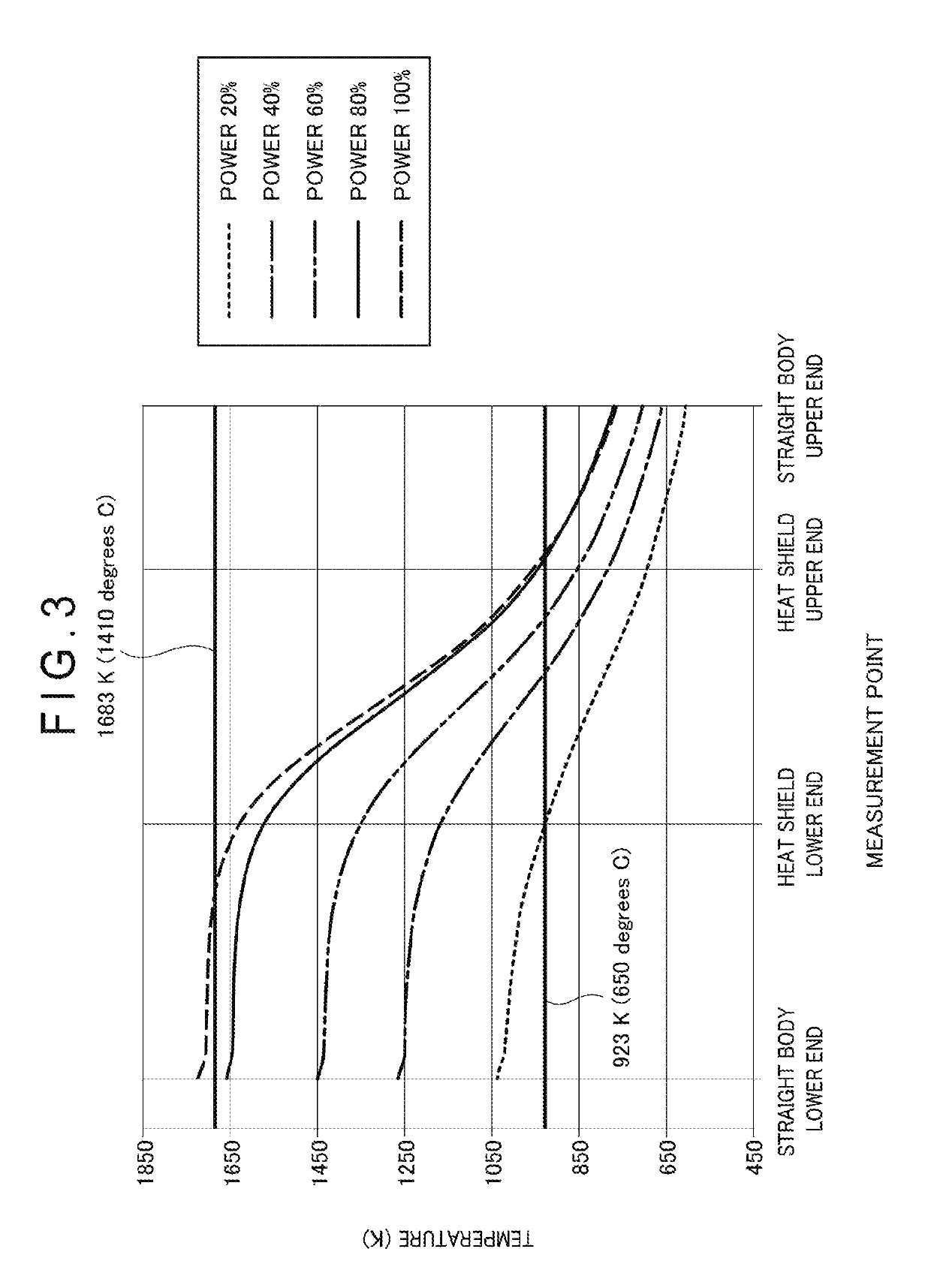Manufacturing method of monocrystalline silicon and monocrystalline silicon
a manufacturing method and technology of monocrystalline silicon, applied in the direction of crystal growth process, polycrystalline material growth, chemistry apparatus and processes, etc., can solve the problems of inability to perform desired sputtering and the like, and the resistivity during the sputtering or plasma etching process may become different from the target value, so as to improve production efficiency and shorten the time for heating the crucible added with silicon material.
- Summary
- Abstract
- Description
- Claims
- Application Information
AI Technical Summary
Benefits of technology
Problems solved by technology
Method used
Image
Examples
experiment 1
[0084]Initially, the monocrystal pull-up apparatus 1 shown in FIG. 1 was prepared. Then, after performing the same growth step and separating step as those in the exemplary embodiment, the heater was powered off without performing the state holding step, and then the draw-out step was performed. It should be noted that the process for Experiment 1 is the same as a typical process.
experiment 2
[0085]A monocrystalline silicon was prepared under the same conditions as those in Experiment 1 except that the heater was powered off after the state holding step was performed subsequent to the separating step, and then the draw-out step was performed. During the state holding step, the power of the heater was kept at 60% of the power at the end of the formation of the straight body, and the upper end SM21 of the straight body SM2 was situated at the same level as the upper end 27A of the heat shield 27 as shown in FIG. 5.
Experiments 3, 4
[0086]Monocrystalline silicons were prepared under the same conditions as those in Experiment 2 except that: the upper end of the straight body was located at a vertically middle position in the heat shield in the state holding step (Experiment 3); and the upper end of the straight body was situated at the same level as the lower end of the heat shield (Experiment 4). It should be noted that an experiment using a monocrystalline silicon of 1200 mm...
PUM
| Property | Measurement | Unit |
|---|---|---|
| diameter | aaaaa | aaaaa |
| resistivity | aaaaa | aaaaa |
| resistivity | aaaaa | aaaaa |
Abstract
Description
Claims
Application Information
 Login to View More
Login to View More - R&D
- Intellectual Property
- Life Sciences
- Materials
- Tech Scout
- Unparalleled Data Quality
- Higher Quality Content
- 60% Fewer Hallucinations
Browse by: Latest US Patents, China's latest patents, Technical Efficacy Thesaurus, Application Domain, Technology Topic, Popular Technical Reports.
© 2025 PatSnap. All rights reserved.Legal|Privacy policy|Modern Slavery Act Transparency Statement|Sitemap|About US| Contact US: help@patsnap.com



